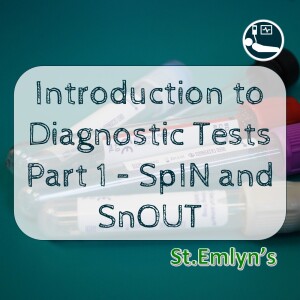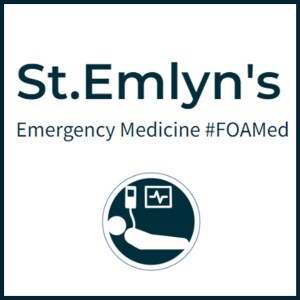
- Podcast Features
-
Monetization
-
Ads Marketplace
Join Ads Marketplace to earn through podcast sponsorships.
-
PodAds
Manage your ads with dynamic ad insertion capability.
-
Apple Podcasts Subscriptions Integration
Monetize with Apple Podcasts Subscriptions via Podbean.
-
Live Streaming
Earn rewards and recurring income from Fan Club membership.
-
Ads Marketplace
- Podbean App
-
Help and Support
-
Help Center
Get the answers and support you need.
-
Podbean Academy
Resources and guides to launch, grow, and monetize podcast.
-
Podbean Blog
Stay updated with the latest podcasting tips and trends.
-
What’s New
Check out our newest and recently released features!
-
Podcasting Smarter
Podcast interviews, best practices, and helpful tips.
-
Help Center
-
Popular Topics
-
How to Start a Podcast
The step-by-step guide to start your own podcast.
-
How to Start a Live Podcast
Create the best live podcast and engage your audience.
-
How to Monetize a Podcast
Tips on making the decision to monetize your podcast.
-
How to Promote Your Podcast
The best ways to get more eyes and ears on your podcast.
-
Podcast Advertising 101
Everything you need to know about podcast advertising.
-
Mobile Podcast Recording Guide
The ultimate guide to recording a podcast on your phone.
-
How to Use Group Recording
Steps to set up and use group recording in the Podbean app.
-
How to Start a Podcast
-
Podcasting
- Podcast Features
-
Monetization
-
Ads Marketplace
Join Ads Marketplace to earn through podcast sponsorships.
-
PodAds
Manage your ads with dynamic ad insertion capability.
-
Apple Podcasts Subscriptions Integration
Monetize with Apple Podcasts Subscriptions via Podbean.
-
Live Streaming
Earn rewards and recurring income from Fan Club membership.
-
Ads Marketplace
- Podbean App
- Advertisers
- Enterprise
- Pricing
-
Resources
-
Help and Support
-
Help Center
Get the answers and support you need.
-
Podbean Academy
Resources and guides to launch, grow, and monetize podcast.
-
Podbean Blog
Stay updated with the latest podcasting tips and trends.
-
What’s New
Check out our newest and recently released features!
-
Podcasting Smarter
Podcast interviews, best practices, and helpful tips.
-
Help Center
-
Popular Topics
-
How to Start a Podcast
The step-by-step guide to start your own podcast.
-
How to Start a Live Podcast
Create the best live podcast and engage your audience.
-
How to Monetize a Podcast
Tips on making the decision to monetize your podcast.
-
How to Promote Your Podcast
The best ways to get more eyes and ears on your podcast.
-
Podcast Advertising 101
Everything you need to know about podcast advertising.
-
Mobile Podcast Recording Guide
The ultimate guide to recording a podcast on your phone.
-
How to Use Group Recording
Steps to set up and use group recording in the Podbean app.
-
How to Start a Podcast
-
Help and Support
- Discover

Ep 3 - Understanding diagnostics In Emergency Medicine Part 1. SNout SpIn and Probability
Patients often come to us with the fundamental question: "Doctor, what's wrong with me?" Our goal is to provide an answer through history, examination, and tests. Let's explore what it means to make a diagnosis in emergency medicine.
The Role of Diagnosis in Emergency MedicineIn day-to-day practice, making a diagnosis often means applying a label to a patient. This label helps us decide on the next steps, whether to treat or reassure and send them home. In emergency medicine, we frequently focus on ruling out serious conditions rather than confirming them. This approach allows us to prioritize immediate life-threatening issues and manage resources effectively.
Working Backwards: Ruling Out Serious ConditionsOur primary concern in emergency medicine is to identify conditions that can kill quickly, often within hours. Therefore, we start by ruling out the most serious conditions first. Diagnostic tests, including history and physical examination, play a crucial role in this process. Every question we ask and every examination we perform are part of our diagnostic strategy, aiming to rule out or confirm serious illnesses.
Sensitivity and Specificity in Diagnostic TestingUnderstanding diagnostic tests involves two key concepts: sensitivity and specificity.
- Sensitivity refers to a test's ability to correctly identify those with the disease (true positives). High sensitivity means that a negative test result is reliable for ruling out the disease.
- Specificity measures a test's ability to correctly identify those without the disease (true negatives). High specificity means that a positive test result is reliable for confirming the disease.
For example, a D-Dimer test for thrombotic disease is highly sensitive. It picks up most cases of the disease but also includes some false positives. Conversely, a highly specific test like jaw claudication for temporal arteritis has very few false positives but isn't useful as a broad screening tool because only a small percentage of patients with the disease exhibit this symptom.
The Importance of Probability and RiskIn emergency medicine, we rarely achieve 100% certainty in diagnosis. Tests with 98% sensitivity, for instance, still miss 2% of cases. This level of uncertainty is part of our practice, and we must communicate it effectively to patients. Explaining the probabilistic nature of diagnosis helps patients understand the limitations of medical testing and the importance of follow-up if symptoms persist or worsen.
Balancing Diagnosis and TreatmentThe consequences of diagnosing and treating a condition vary. For life-threatening conditions like myocardial infarction (MI), the treatment involves significant interventions such as thrombolysis or PCI, which carry their own risks. Therefore, we need a high degree of certainty before initiating such treatments. In contrast, diagnosing a viral sore throat, which requires minimal intervention, demands less certainty.
Continuous Learning and ImprovementReflecting on our diagnostic processes is crucial for improvement. Recognizing that we work in a probabilistic environment helps us balance the need for thorough investigation with the risk of over-testing. By continuously learning and refining our approach, we can enhance patient care and outcomes.
Favourite Diagnostic ToolsTo conclude, let's talk about our favorite diagnostic tools. Personally, I appreciate the value of ultrasound in the resuscitation room, especially for diagnosing pneumothorax in trauma patients. It's a quick, effective tool that guides immediate intervention. Simon, on the other hand, highlights the D-Dimer test. Despite its controversial reputation, it serves as a prime example of a test that, when understood and used correctly, can be incredibly valuable.
We hope this podcast has provided some insight into the complexities and nuances of diagnosis in emergency medicine. Stay tuned for our next episode, where we'll delve deeper into the probabilistic nature of diagnosis and how we make informed decisions in the emergency department. Until then, take care and continue to enjoy your practice in emergency medicine.
More listening about diagnosisPodcast – Diagnosis in Emergency Medicine Part 1 – SpIN and SnOUT
Podcast – Diagnosis in Emergency Medicine Part 2 – Beyond a simple yes or no
Podcast – Diagnosis in Emergency Medicine Part 3 – The importance of prevalence
More Episodes
 2026-01-02
2026-01-02
 787
787
 2025-12-23
2025-12-23
 1.1k
1.1k
 2025-12-20
2025-12-20
 1.3k
1.3k
 2025-04-23
2025-04-23
 2.2k
2.2k
 2025-03-26
2025-03-26
 2.1k
2.1k
Create your
podcast in
minutes
- Full-featured podcast site
- Unlimited storage and bandwidth
- Comprehensive podcast stats
- Distribute to Apple Podcasts, Spotify, and more
- Make money with your podcast
It is Free
- Privacy Policy
- Cookie Policy
- Terms of Use
- Consent Preferences
- Copyright © 2015-2026 Podbean.com


